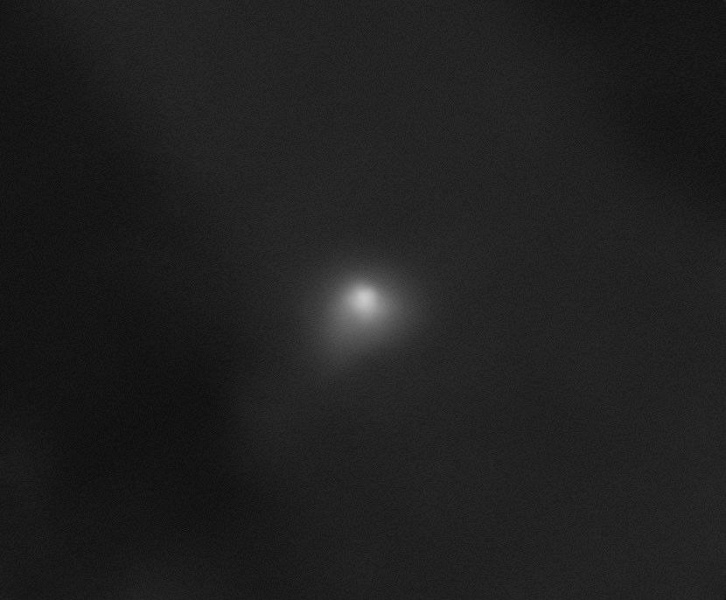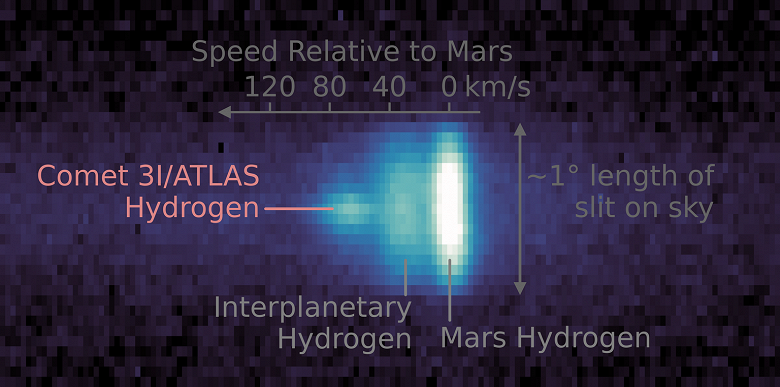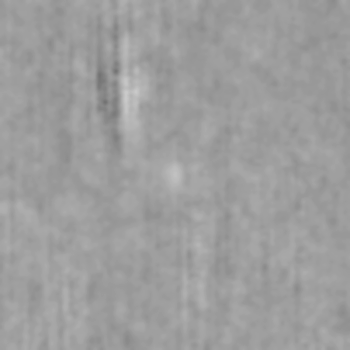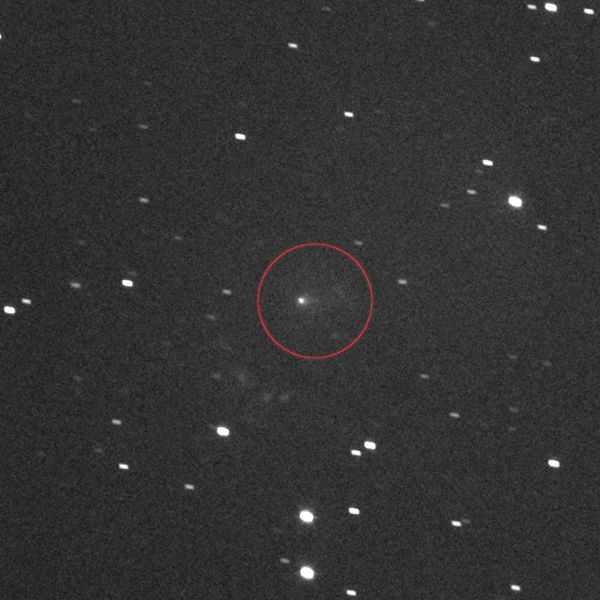Several hours ago, a press conference was held where NASA representatives released new images of the interstellar comet 3I/ATLAS. Since its discovery on July 1, twelve NASA missions have already captured and processed images of the comet, with several more spacecraft preparing for new observations. According to scientists, such an extensive network of observations provides a unique opportunity to understand how an interstellar comet differs from ‘native’ Solar System objects and what features other planetary systems might have. The comet’s speed of 209,000 kilometers per hour (130,000 mph) has also intrigued researchers, making it one of the fastest recorded interstellar objects.

NASA’s HiRISE (High Resolution Imaging Science Experiment), installed on the Mars Reconnaissance Orbiter, made this image of the interstellar comet 3I/ATLAS on October 2, 2025. At the time the image was taken, the comet was about 0.2 astronomical units (30 million kilometers or 19 million miles) from the spacecraft. Photo: NASA The closest shots of the comet were taken from Mars: in the fall, it approached the planet by 30 million kilometers. NASA’s Mars Reconnaissance Orbiter and MAVEN spacecraft captured detailed images, including ultraviolet images that will help determine the comet’s composition. The Perseverance rover also managed to catch its faint trail from the surface. This collective effort highlights the collaborative nature of pursuing insights from interstellar visitors.

NASA’s heliophysics missions have the opportunity to observe areas of the sky near the Sun-regions inaccessible to ground-based telescopes. Thanks to this, STEREO tracked the comet from September 11 to October 2. The joint ESA/NASA SOHO mission was observing from October 15 to 26, and the new PUNCH spacecraft, launched this year, recorded the comet’s tail from September 20 to October 3. This year marked the first intentional study of an object from another star system by NASA’s heliophysics missions, showcasing the cooperative spirit prevailing in such international missions.

The missions Psyche and Lucy, en route to their asteroid targets, also observed the comet along their paths. Psyche took a series of images on September 8–9 from a distance of 53 million kilometers (33 million miles), which will help refine 3I/ATLAS’s trajectory. Lucy captured it on September 16 from a distance of 386 million kilometers (240 million miles). The diversity of these missions contributes to a more detailed and comprehensive understanding of the comet’s path and physical traits as it interacts with the solar environment.

The comet 3I/ATLAS was discovered on July 1 by the Chilean ATLAS telescope, funded by NASA. In the same month, the object was studied by the Hubble Space Telescope. In August, the James Webb and SPHEREx telescopes joined the observations. The comet’s closest approach to Earth is expected on Friday, December 19, when the comet passes at a distance of 273 million kilometers (170 million miles)-almost twice as far as the distance from Earth to the Sun. NASA will continue to track its movement, including after it crosses Jupiter’s orbit in 2026. The timeline of observations highlights the international cooperation involved in this mission, which aims to deepen our understanding of such enigmatic travelers from distant realms.








